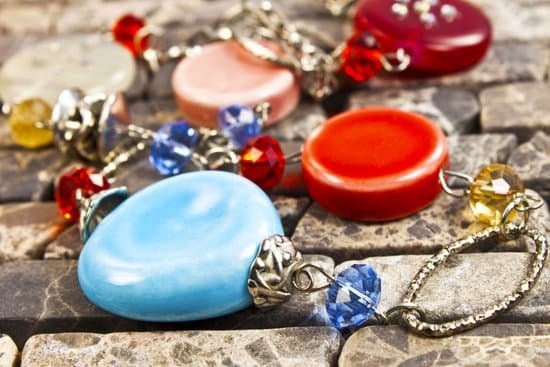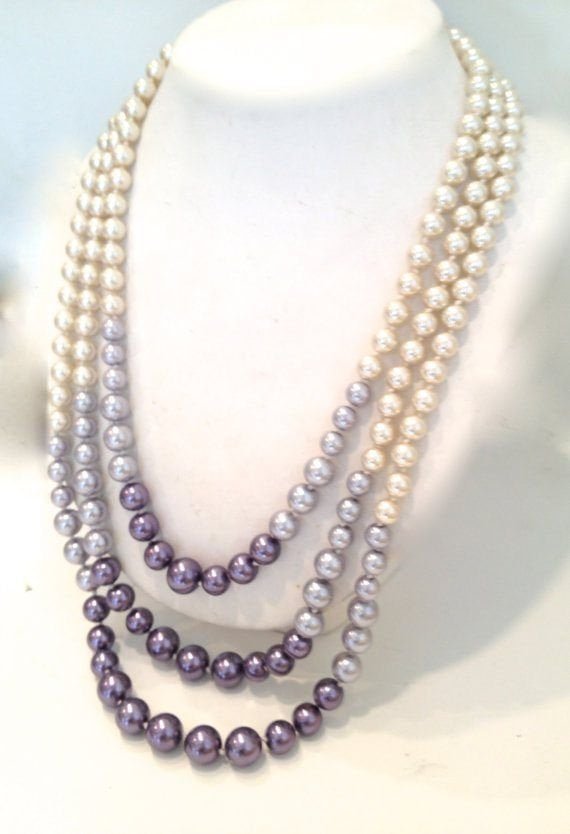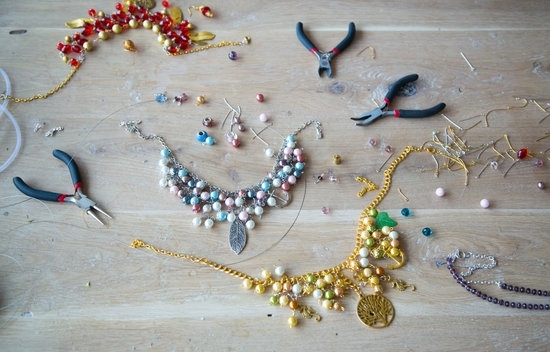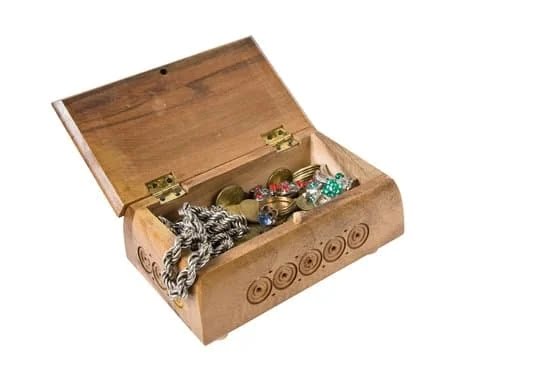The history of German jewelry is a fascinating journey through time, showcasing the evolution of designs, techniques, and cultural influences. From early craftsmanship to contemporary trends, German jewelry has made a lasting impact in the global market. This article aims to explore the rich history of German jewelry, from its humble beginnings to its present-day significance.
Early German jewelry making techniques and materials have laid the foundation for the country’s reputation as a hub for exquisite craftsmanship. The influence of German royalty on jewelry design has also shaped the aesthetic and style of German jewelry throughout history. Furthermore, the article will delve into how German jewelry thrived during the Renaissance period and experienced a resurgence in the 19th century, as well as the impact of world wars on its production.
Moreover, this section will also highlight modern German jewelry designers and trends, showcasing how they have continued to push boundaries and make their mark in the global market. Finally, it will examine the legacy and future of German jewelry, shedding light on its significance today. Follow along as we embark on a captivating exploration of the fascinating world of German jewelry.
Early German Jewelry Making Techniques and Materials
German jewelry has a rich and diverse history that dates back centuries. The early techniques and materials used in German jewelry making have played a significant role in shaping the art form. During the medieval period, German jewelry makers utilized a variety of materials such as gold, silver, precious gemstones, and enamel to create intricate and elaborate designs. Techniques such as filigree work, granulation, and cloisonné were commonly employed to produce exquisite pieces of jewelry.
One of the most famous early German jewelry-making techniques is known as “Schwarze Arbeit” or blackwork. This technique involved the use of darkened silver or gold to create contrast within the design, resulting in stunning visual effects. German jewelry makers were also known for their skillful use of embossing and engraving to add depth and texture to their creations.
The historical significance of these early German jewelry making techniques and materials cannot be overstated. They laid the foundation for future generations of jewelry designers and craftsmen, influencing styles and trends for centuries to come.
Today, modern German jewelry designers continue to draw inspiration from these traditional techniques, incorporating them into contemporary designs that resonate with global audiences. The legacy of these early methods lives on in the timeless beauty of German jewelry, making it a cherished part of the country’s cultural heritage.
The Influence of German Royalty on Jewelry Design
Throughout history, German royalty has played a significant role in influencing the design and production of jewelry. From the medieval period to the renaissance, the opulence and extravagance of German monarchs have shaped the styles and techniques used in creating exquisite pieces of jewelry.
During the medieval period, German royalty favored jewelry that reflected their wealth and power. This led to an increased demand for intricate designs that incorporated precious gemstones such as emeralds, rubies, and sapphires. Goldsmiths and silversmiths were commissioned to create elaborate pieces that showcased the status and grandeur of the ruling class.
In addition to precious gemstones, German royals also popularized ornate filigree work and enamel detailing in their jewelry. These techniques became synonymous with German royal jewelry design and were later adopted by artisans throughout Europe.
The influence of German royalty on jewelry design continued to evolve through the renaissance period, with a shift towards more classical motifs and a focus on craftsmanship. The legacy of these early influences can still be seen in modern German jewelry design, with many contemporary designers drawing inspiration from the rich history of German royal adornment.
| German Royalty Jewelry Influence | Impact |
|---|---|
| Intricate designs incorporated precious gemstones such as emeralds, rubies, and sapphires. | Increased demand for opulent jewelry pieces. |
| Popularized ornate filigree work and enamel detailing. | Adopted by artisans throughout Europe. |
German Jewelry in the Renaissance Period
During the Renaissance period, German jewelry experienced significant developments in terms of design and craftsmanship. This era, lasting from the 14th to the 17th century, brought about a revival of interest in classical art and culture, which had a profound impact on jewelry making in Germany.
Revival of Techniques and Materials
The Renaissance period saw a resurgence of ancient jewelry making techniques and materials. German jewelers began to incorporate intricate metalwork, engraving, and enameling into their designs, drawing inspiration from Roman and Greek jewelry styles. Goldsmiths also started using precious stones such as diamonds, rubies, sapphires, and emeralds to create elaborate pieces that reflected the wealth and power of the ruling class.
Royal Patronage and Symbolism
One of the key influences on German jewelry during the Renaissance was the patronage of royalty and nobility. The rulers of various German states commissioned grandiose pieces to showcase their status and alliances. Jewelry also became a means of political expression, with intricate symbolism embedded in each piece to convey messages about power, lineage, and alliance.
The Reformation’s Impact
The religious upheaval brought about by the Protestant Reformation had a dual impact on German jewelry design. On one hand, Protestant beliefs led to a rejection of ostentatious display through excessive adornment. This resulted in simpler, more understated designs influenced by Calvinist ideals. On the other hand, some rulers continued to embrace opulent jewelry as a sign of their power at a time when secular authority was increasing in importance.
Overall, the Renaissance period marked an important chapter in the history of German jewelry as it laid down many of the techniques and styles that continue to influence modern designs today.
The Rise of German Jewelry in the 19th Century
The 19th century marked a significant period in the history of German jewelry, as it experienced a renaissance in craftsmanship and design. During this time, the industrial revolution had a transformative impact on the production of jewelry, leading to innovative techniques and the introduction of new materials. German jewelers began to explore and experiment with different styles, drawing inspiration from both historical and contemporary sources.
One notable development during this period was the emergence of artisanal jewelry workshops, where skilled craftsmen produced intricate pieces by hand. This shift towards craftsmanship reflected a growing appreciation for unique, well-crafted jewelry that stood apart from mass-produced pieces. Additionally, technological advancements allowed for greater precision in gem-cutting and setting, resulting in exquisite designs that showcased the beauty of fine gemstones.
The 19th century also saw a revival of interest in historical jewelry styles, particularly those from the medieval and Renaissance periods. German jewelers drew inspiration from historical artifacts and incorporated elements such as filigree work, enamel detailing, and intricate metalwork into their creations.
This fusion of traditional techniques with contemporary design sensibilities set German jewelry apart as a unique and sought-after style in the global market. The rise of German jewelry in the 19th century laid the groundwork for its continued influence on international fashion and design.
The Impact of World Wars on German Jewelry Production
World War II further disrupted German jewelry production, with many jewelry workshops being forced to close or repurpose for wartime manufacturing. Precious metals were once again allocated for the war effort, and this scarcity affected the availability of fine jewelry. However, some designers embraced this challenge and began creating pieces with a focus on durability and practicality rather than extravagance. The wartime experiences influenced the aesthetics of German jewelry, leading to more minimalist and functional designs.
Despite the challenges brought about by World Wars I and II, German jewelry production persevered and eventually found its footing in the post-war period. The resilience of German jewelers enabled them to adapt to changing circumstances and create pieces that resonated with the evolving societal values. The impact of these wars on German jewelry production cannot be understated, as it shaped the industry’s path towards modernization and innovation.
- Adaptation to scarcity
- New materials used in jewelry making
- Influence on design aesthetics
Modern German Jewelry Designers and Trends
Germany has a rich history of jewelry-making that dates back centuries, and this tradition continues to thrive in the modern era. Today, German jewelry designers are known for their innovative designs, high-quality craftsmanship, and use of diverse materials. Several prominent designers have emerged from Germany, making significant contributions to the global jewelry industry.
Innovative Designs
Modern German jewelry designers are celebrated for their ability to blend traditional craftsmanship with contemporary aesthetics. Many creators take inspiration from the country’s rich cultural heritage, combining it with modern influences to produce unique and avant-garde pieces. From minimalist geometric shapes to bold and unconventional designs, German jewelry reflects a diverse range of styles that cater to varying tastes.
Use of Diverse Materials
German jewelry designers are known for their experimentation with a wide array of materials beyond traditional precious metals and gemstones. These artists have embraced unconventional materials such as acrylics, wood, ceramics, and even recycled elements in their creations. This commitment to innovation has set German jewelry apart as a leader in eco-friendly and sustainable design practices within the global market.
Global Impact
The work of modern German jewelry designers has had a significant impact on the global market. Their creations are sought after by collectors and fashion enthusiasts around the world, contributing to Germany’s reputation as a hub for cutting-edge design. With an emphasis on quality craftsmanship and attention to detail, German-made jewelry continues to be highly regarded within the international fashion industry.
As Germany’s legacy in jewelry-making continues into the 21st century, its modern designers are poised to play an increasingly influential role in shaping global trends while honoring the rich history of German jewelry.
The Significance of German Jewelry in the Global Market Today
Germany has a rich history of jewelry making, dating back to ancient times. The history of German jewelry is a reflection of the country’s diverse cultural influences and its position as a leader in craftsmanship and design. Today, German jewelry continues to hold significance in the global market, with a blend of traditional techniques and modern trends.
One of the key factors contributing to the significance of German jewelry in the global market today is the country’s reputation for high-quality craftsmanship. From intricate metalwork to precision gemstone setting, German artisans are known for their attention to detail and technical expertise. This commitment to quality has established German jewelry as a symbol of luxury and excellence worldwide.
Furthermore, the legacy of German royalty continues to influence the global market for jewelry. The opulent designs favored by German nobility throughout history have left an indelible mark on the world of jewelry. The influence of royal patronage can be seen in everything from elaborate gemstone arrangements to regal motifs that continue to be popular among collectors and connoisseurs.
In addition, contemporary German jewelry designers are making waves in the global market with their innovative approaches and unique styles. By blending traditional techniques with avant-garde concepts, these designers are setting new trends and pushing boundaries in the world of jewelry. Their creations contribute to the continued relevance and impact of German jewelry on an international scale.
Conclusion
The history of German jewelry is a rich and fascinating journey that has evolved over centuries, showcasing the intricate techniques and diverse designs that have come to define this art form. From early German jewelry making techniques and materials to the influence of royalty on jewelry design, the legacy of German jewelry is deeply rooted in tradition and craftsmanship.
Throughout the Renaissance period, German jewelry flourished with elaborate designs that reflected the opulence and grandeur of the time. This era laid the foundation for the rise of German jewelry in the 19th century, as craftsmen began experimenting with new styles and materials, ultimately shaping the future of German jewelry.
The impact of world wars on German jewelry production cannot be overlooked, as it led to a significant decline in output and innovation. However, despite these challenges, modern German jewelry designers have emerged onto the global stage, infusing traditional craftsmanship with contemporary trends to create stunning pieces that are highly sought after worldwide.
The legacy of German jewelry continues to thrive today as it remains an important player in the global market, solidifying its place as a timeless art form that will continue to inspire future generations.
Frequently Asked Questions
Did Germanic Tribes Wear Earrings?
Germanic tribes did wear earrings, which were often made of gold and adorned with precious stones or intricate designs. Earrings were worn by both men and women as a sign of wealth and status.
When Was Western Germany Jewelry Made?
Jewelry in Western Germany was made as early as the Bronze Age, with evidence of sophisticated metalworking techniques dating back to 2300 BCE. The region has a rich history of jewelry making, from ancient times to modern artisanal crafts.
Is Jewelry Stamped Germany Real Gold?
Jewelry stamped with “Germany” does not necessarily indicate real gold. While Germany is known for its high-quality craftsmanship, the stamp alone does not guarantee the authenticity of the material. It’s important to look for additional indicators such as karat markings or reputable brand certifications for gold jewelry.

Welcome to my jewelry blog! My name is Sarah and I am the owner of this blog.
I love making jewelry and sharing my creations with others.
So whether you’re someone who loves wearing jewelry yourself or simply enjoys learning about it, be sure to check out my blog for insightful posts on everything related to this exciting topic!





